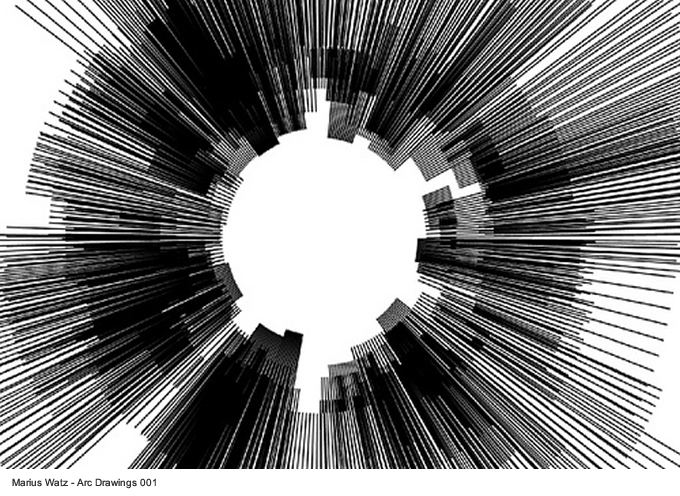Project 1: Generative and Algorithmic Exploration

Generative art often creates content through reproduction and is mutable, reacting to randomization or outside information to create change. Algorithmic art refers to art that uses a pre-existing set of instructions to generate its content. In this project you should create a set of pieces that will explore the ideas of repetition and transformation. The use of modularity and repeating patterns as well as filtering and transcoding (describing one form of information with another type of presentation) will provide interesting options for you to explore.
Instead of creating sketches that create singular expressions of your code, you should be creating sketches that generate their result in response to a predefined algorithm or set of instructions. By creating code that is responsive to randomization or streams of input, you will create variations upon a fixed set of rules within each sketch. An interesting example that shows how specific code structures or more abstract sets of instructions can be used is seen in Casey Reas' Process Compendium (individual sketch output is found here). Other sources of inspiration can be found at abandonedart.org, and some of the sketches at openprocessing.org. For a better understanding of generative art in general watch Generative Art - Computers, Data, & Humanity from PBS and their Off Book series.
Prototype due date: 4/13
Due date: 4/20
Requirements
Using Reas’s work as a loose model, please create a minimum of three rules for your project that explore the ideas of repetition and transformation. You should use the same rules in creating three different interpretations in three different sketches for this project. Each sketch will use the same three rules. It is expected that as each sketch is run, it should have a categorically different result than the others.
This project allows you to take an explorative approach in creating a visualization or experimental construction. It is a chance to explore areas further than we were able to in class. This will take research on your part using the book, the examples in Processing and looking at sketches from other web sites such as openprocessing.org. You will need to choose two of the areas outlined below.
Pick at least two
- Mathematically generated motion: trig functions, curves, random
- Animation: not simple motion but multi-frame animation using an array
- Interactive type: type responding to some other factor or input such as mouse movement or color change
- Image processing: use of blends or filters on the images in your sketch. These changes should be tied to a form of input.
Required
- Three different sketches that explore the interrelation between your rules
- Randomization or user input is driving the output in the sketches
- Code must be well commented to demonstrate your understanding
- Mouse input must control some aspect based upon movement or position (at least 1 sketch)
- Key input signals change to at least one parameter of the sketch (at least 1 sketch)
- Output must be able to be saved as still images (all sketches)
- Modular: functions are used wherever appropriate
Prototype Deliverables
- 1 sketch demonstrating you have formulated your set of 3 rules and have a basic working version
- at least 1 image literally sketching out the ideas behind your 3 rules
Bring a USB key or external hard drive you can use to transfer a copy of your sketch to the lab computer at the front of the room (the one I work off of). I will make a folder on the desktop for the class that you can copy your sketch into it. You should do this at the beginning of class, as soon as you come in.